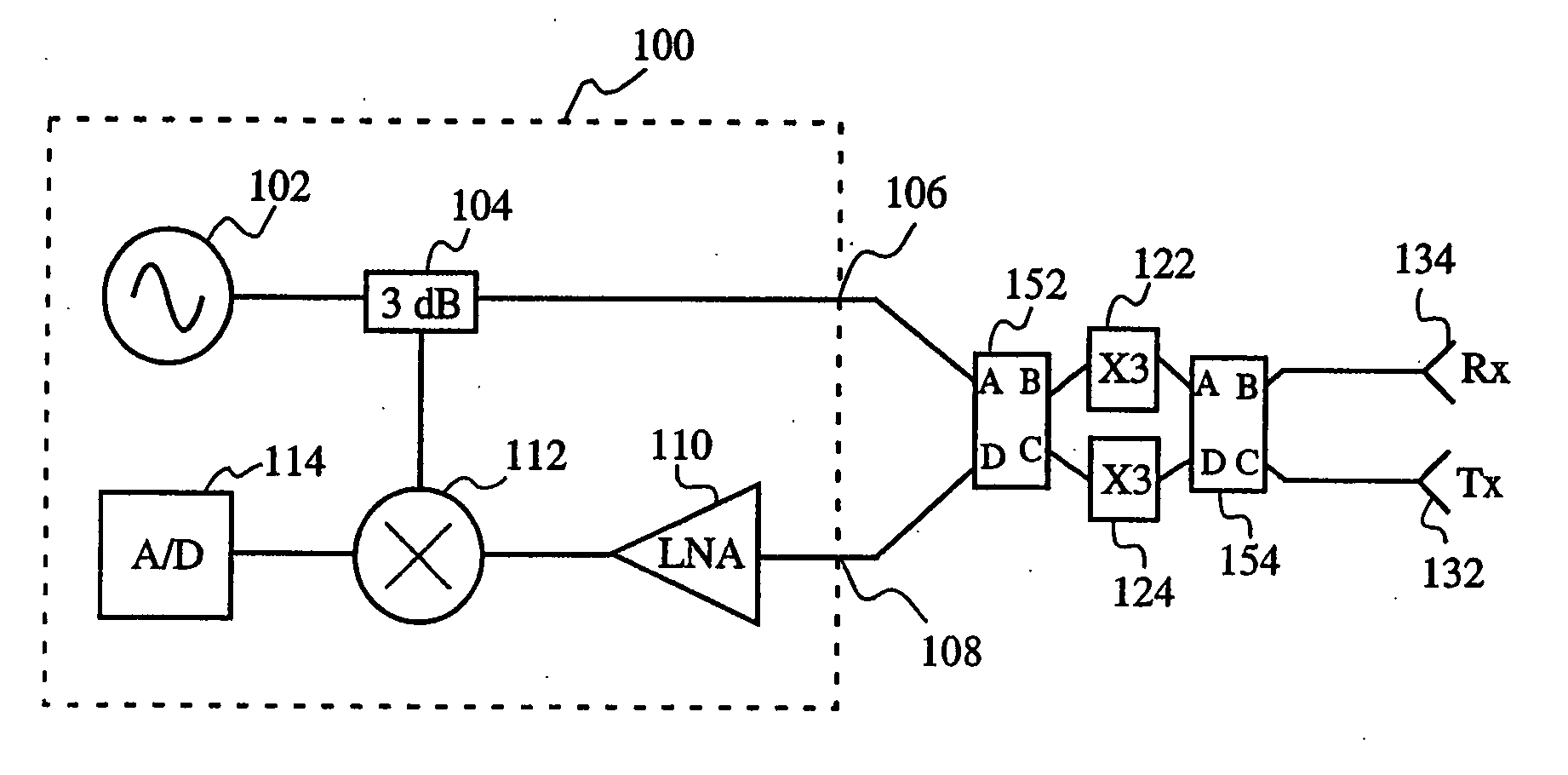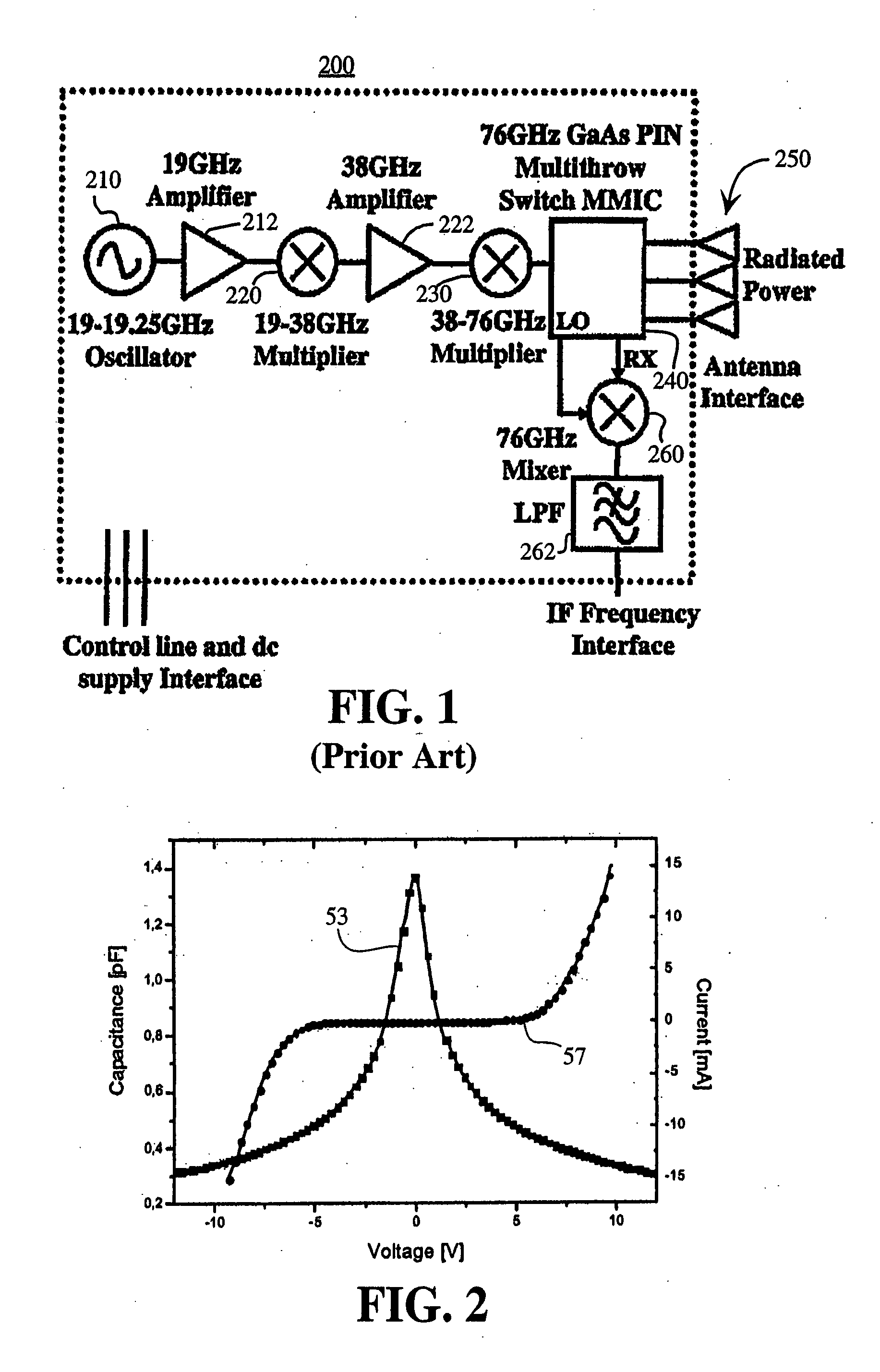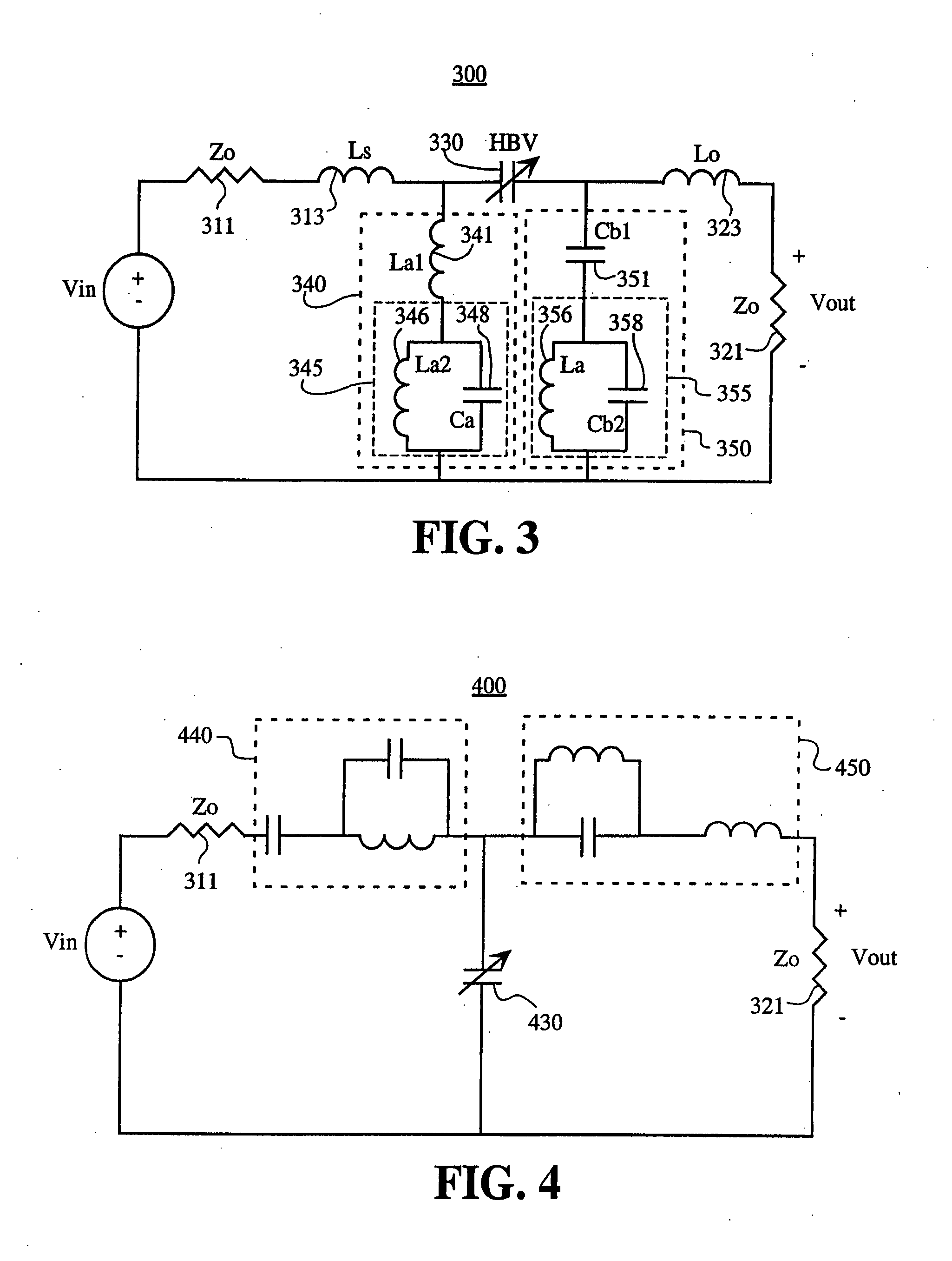Apparatus and method for frequency conversion
a frequency conversion and apparatus technology, applied in the field of apparatus and method for frequency conversion, can solve the problems of increasing the cost of components, complicated circuitry, and high cost of typical frequency multiplier stages, and achieve the effects of saving cost, complexity, size, weight, and other factors
- Summary
- Abstract
- Description
- Claims
- Application Information
AI Technical Summary
Benefits of technology
Problems solved by technology
Method used
Image
Examples
Embodiment Construction
[0017] The present invention will now be described more fully hereinafter with reference to the accompanying drawings, in which preferred embodiments of the invention are shown. This invention may be embodied in many different forms and should not be construed as limited to the embodiments set forth herein. Further, the dimensions of certain elements shown in the accompanying drawings may be exaggerated to more clearly show details. The present invention should not be construed as being limited to the dimensional relations shown in the drawings, nor should the individual elements shown in the drawings be construed to be limited to the dimensions shown.
[0018] As shown in FIG. 1, up conversion from a microwave frequency signal to a millimeter wave frequency signal may be accomplished by using a series of frequency doublers. Up conversion from a microwave frequency signal (or from a lower frequency millimeter wave signal) to a higher frequency millimeter wave signal may also be accomp...
PUM
 Login to View More
Login to View More Abstract
Description
Claims
Application Information
 Login to View More
Login to View More - R&D
- Intellectual Property
- Life Sciences
- Materials
- Tech Scout
- Unparalleled Data Quality
- Higher Quality Content
- 60% Fewer Hallucinations
Browse by: Latest US Patents, China's latest patents, Technical Efficacy Thesaurus, Application Domain, Technology Topic, Popular Technical Reports.
© 2025 PatSnap. All rights reserved.Legal|Privacy policy|Modern Slavery Act Transparency Statement|Sitemap|About US| Contact US: help@patsnap.com



